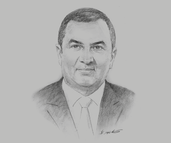Carlos Oliva, Minister of Economy and Finance: Interview

Interview: Carlos Oliva
What sectors of the economy is the government prioritising for foreign direct investment (FDI)?
CARLOS OLIVA: The government is seeking to attract more FDI into sectors where international players have been present for many years, such as finance, construction, ICT and agro-industry. In addition, we are promoting FDI in sectors that are in their early stages of development, such as forestry, aquaculture and tourism. The untapped potential of these three sectors is very high, but we need additional expertise and financial support to develop them.
Agro-industry was, for example, almost non-existent in the early 2000s, but it has since grown to become 15 times its former size. Furthermore, since 2014 Peru has become one of the leading countries in exporting avocados and asparagus, thanks in part to the effective leveraging of Peru’s high-quality soil and diverse bioclimatic environment.
Mining has historically been the main driver of Peru’s growth and the leading sector for investment. The importance of this sector is certain to extend over the coming decades, and the government is therefore keen to keep investors interested in this sector. So far in 2019 more than $8bn in investment has been earmarked for the development of Quellaveco and the expansion of the Toromocho and Mina Justa mines. However, we are also very aware of the need to diversify the structure of our economy and our export matrix in order to ensure sustained growth during cyclical downturns in the international metals market. Accordingly, we have implemented executive bureaus for eight sectors, including forestry, aquaculture and tourism.
How is the government trying to attract FDI?
OLIVA: In the decades following the beginning of the liberalisation process in the early 1990s, Peru has become a leading destination for FDI. Investors have developed confidence in the economy as a direct result of the good experiences they have had over the course of the last 25 years. There is a level playing field and a fair legal framework for international investors, with all stakeholders protected by the constitution. However, while we have both macroeconomic stability and a friendly investment environment, there is still plenty that can be done to attract more investment.
In addition to increasing FDI inflows, it is essential to focus on boosting overall competitiveness. Since the beginning of liberalisation Peru has emerged as a stable and dynamic economy, and we want our success story to repeat itself over the next 25 years. In order to ensure this new cycle of growth, the government needs to ensure that investors and the international market are fully aware of our long-term commitments to policies like the National Plan for Competitiveness and the National Infrastructure Plan, which will be published in the coming months.
What forces are driving Peru’s economic growth?
OLIVA: High growth rates – which we hope will exceed 4% in 2019 – are the direct result of the management of the economy. Peru has consistently pursued a successful monetary and fiscal policy over several decades and under different governments. In addition, successive administrations have been committed to developing a policy that is in line with the needs of the private sector. Ensuring macroeconomic stability and business-friendly policies is a difficult balance to strike; one that very few countries in Latin America have been able to achieve.
Other states have ended up experiencing short periods of very high growth coupled with monetary volatility, or else they have pursued very strict macroeconomic policies that have led to recessions or periods of stagnant growth. In Peru we have sought to avoid the problems experienced by other economies in the region as a result of poor policy choices.
You have reached the limit of premium articles you can view for free.
Choose from the options below to purchase print or digital editions of our Reports. You can also purchase a website subscription giving you unlimited access to all of our Reports online for 12 months.
If you have already purchased this Report or have a website subscription, please login to continue.

